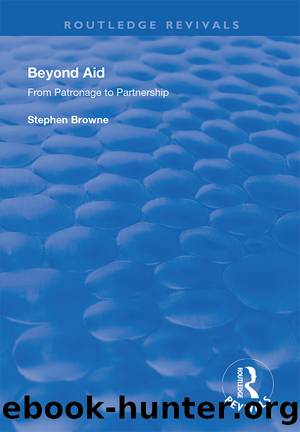Beyond Aid by Stephen Browne

Author:Stephen Browne [Browne, Stephen]
Language: eng
Format: epub
Tags: Social Science, General, Sociology, Developing & Emerging Countries
ISBN: 9780429842245
Google: CqybDwAAQBAJ
Publisher: Routledge
Published: 2018-08-21T04:46:03+00:00
Box 9: MERCOSUR - the fastest emerging regional cooperation arrangement
The Common Market of the South (MERCOSUR) brings together Argentina, Brazil, Paraguay and Uruguay and was created by the Asuncion Treaty of March 1991. It was formed at a time when the Latin American countries were frustrated at the slow pace of multilateral trade negotiations, yet saw regional integration as an important step towards economic openness and trade promotion.
The pace of progress has been impressive. The first three years were a period of transition but by the end of 1994, the member countries had eliminated tariffs on 90% of regional trade. During that period, the value of trade among the four countries was estimated to have grown from less than $3 billion to $12 billion per year. Intra-MERCOSUR trade in 1996 accounted for 22% of total exports, compared with less than 10% in 1990. The grouping is also the only major customs union outside Europe. It has established a common external tariff, covering all about 85% of imports from outside the region, which came into force at the beginning of 1995. The tariff schedule will be fully harmonised over the next ten years. The MERCOSUR countries have a combined population of over 200 million, a total GDP of over $800 billion and trade (in either direction) of over $70 billion per year. The grouping is thus an economic force of some consequence. In addition to creating a substantial amount of additional intra-regional trade, the grouping has also been a spur to incoming foreign investment, as companies have sought to benefit from a large and dynamic market.
The highest authority of MERCOSUR is the Common Market Council, comprising the Ministers of Foreign Affairs and Ministers of Finance. In 1996, the grouping took the important step of establishing a secretariat in Montevideo, and a development bank to finance integration-related investment projects. Also in 1996, MERCOSUR signed free trade agreements with its two associate members, Chile and Bolivia, and is negotiating with Latin Americaâs other important trade association, the Andean Group, about further expansion. An eventual merger of the two blocs could lead towards an FTA in the whole sub-continent. There is also a plan for a Free Trade Area of the Americas which would link all 34 countries of the continent. Bilateral trade liberation deals are being negotiated between Canada and Chile, and between Mexico and several Latin and Central American countries. A continuing impediment to further trade liberalisation is the denial of fast-trackâ negotiating authority to the US Government. However, there is no doubt that in the Americas, regional trade agreements are proving in the 1990s to be stepping stones towards continent-wide liberalisation.
Download
This site does not store any files on its server. We only index and link to content provided by other sites. Please contact the content providers to delete copyright contents if any and email us, we'll remove relevant links or contents immediately.
| Anthropology | Archaeology |
| Philosophy | Politics & Government |
| Social Sciences | Sociology |
| Women's Studies |
The Secret History by Donna Tartt(18803)
The Social Justice Warrior Handbook by Lisa De Pasquale(12125)
Thirteen Reasons Why by Jay Asher(8764)
This Is How You Lose Her by Junot Diaz(6754)
Weapons of Math Destruction by Cathy O'Neil(6116)
Zero to One by Peter Thiel(5657)
Beartown by Fredrik Backman(5574)
The Myth of the Strong Leader by Archie Brown(5400)
The Fire Next Time by James Baldwin(5221)
How Democracies Die by Steven Levitsky & Daniel Ziblatt(5110)
Promise Me, Dad by Joe Biden(5074)
Stone's Rules by Roger Stone(5011)
100 Deadly Skills by Clint Emerson(4821)
A Higher Loyalty: Truth, Lies, and Leadership by James Comey(4820)
Rise and Kill First by Ronen Bergman(4680)
Secrecy World by Jake Bernstein(4615)
The David Icke Guide to the Global Conspiracy (and how to end it) by David Icke(4602)
The Farm by Tom Rob Smith(4419)
The Doomsday Machine by Daniel Ellsberg(4395)
